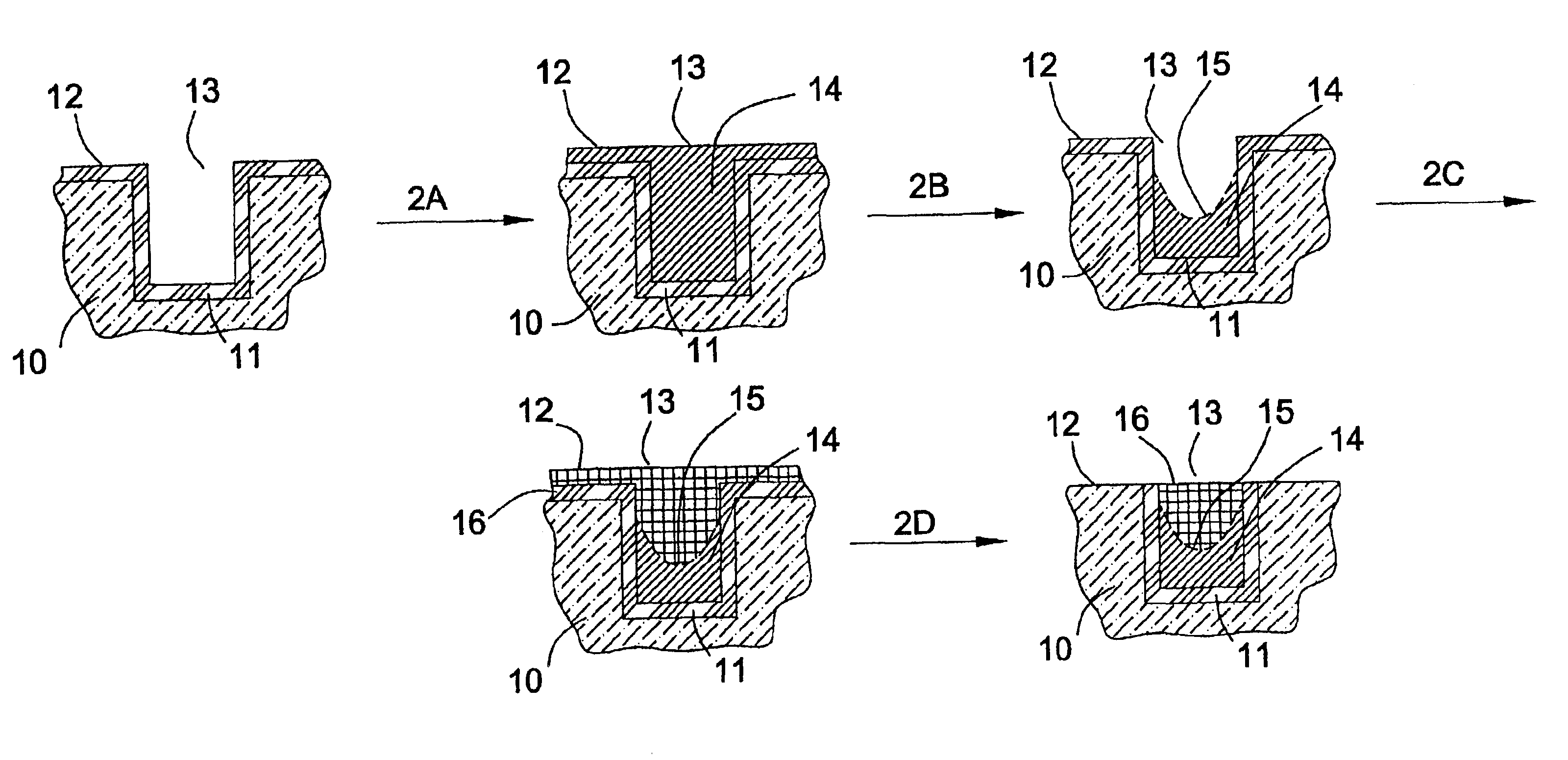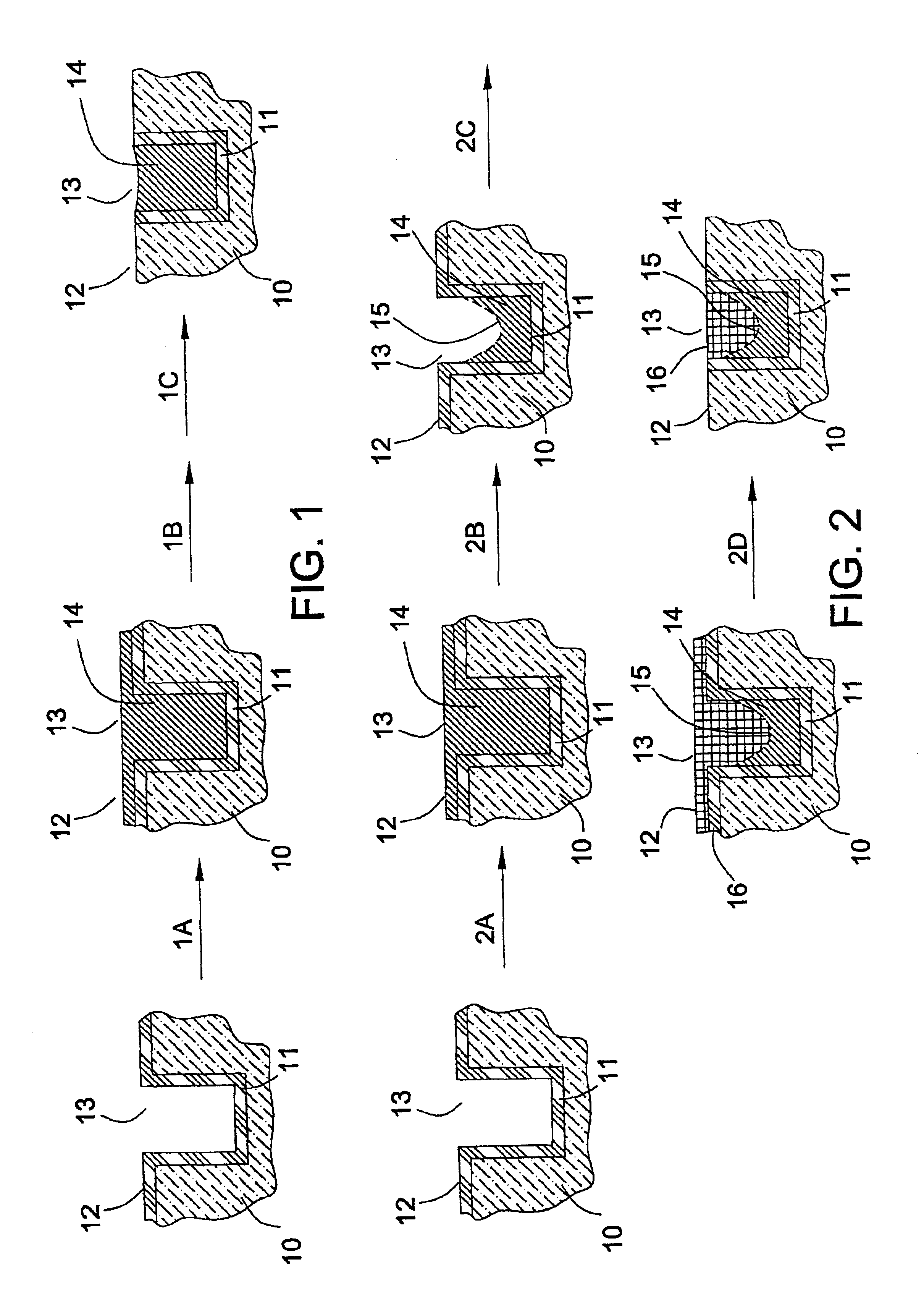Method of reducing in-trench smearing during polishing
a technology of in-trench smearing and polishing, which is applied in the direction of electrical equipment, basic electric elements, capacitors, etc., can solve the problems of inconvenient use, difficult subsequent wafer processing, and inability to provide consistent desired effects, so as to reduce the smearing of filling materials in the trench region and reduce the smearing of in-trench smearing
- Summary
- Abstract
- Description
- Claims
- Application Information
AI Technical Summary
Benefits of technology
Problems solved by technology
Method used
Image
Examples
Embodiment Construction
As illustrated in FIGS. 1 and 2, the invention provides a method of polishing a substrate comprising the following sequential steps: (a) providing a substrate comprising (i) a first layer comprising an insulating material (10), (ii) a second layer comprising a filling material (11) that differs from the insulating material, and (iii) a plurality of field (12) and trench regions (13), (b) infiltrating a polymeric material over the substrate (steps 1A and 2A), wherein the polymeric material (14) fills the trench regions and covers the field regions, (c) subjecting the substrate to a temperature of about 100° C. or more for about 30 minutes or longer, such that during polishing of the substrate, smearing of the filling material in the trench regions becomes reduced as compared to polishing of the substrate under the same conditions except for subjecting the substrate to the temperature of about 100° C. or more for about 30 minutes or longer (step 1B), and (d) polishing the substrate to...
PUM
| Property | Measurement | Unit |
|---|---|---|
| temperature | aaaaa | aaaaa |
| dielectric constant | aaaaa | aaaaa |
| temperatures | aaaaa | aaaaa |
Abstract
Description
Claims
Application Information
 Login to View More
Login to View More - R&D
- Intellectual Property
- Life Sciences
- Materials
- Tech Scout
- Unparalleled Data Quality
- Higher Quality Content
- 60% Fewer Hallucinations
Browse by: Latest US Patents, China's latest patents, Technical Efficacy Thesaurus, Application Domain, Technology Topic, Popular Technical Reports.
© 2025 PatSnap. All rights reserved.Legal|Privacy policy|Modern Slavery Act Transparency Statement|Sitemap|About US| Contact US: help@patsnap.com


